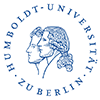Presenting an Egalitarian Multicultural Empire through Transparent Media: Photographic Reporting in Print Mass Media in Late Interwar Japan
Authors
Facilitated by technological advances in cameras, printing methods and equipment, photojournalism blossomed throughout the world during the interwar period. It offered readers insights into the contemporary world, providing access to diverse peoples and remote locations through a combination of photographs and text. Japan was no exception. However, unlike Europe or North America, where the primary medium for disseminating knowledge through images was photo magazines or newspapers, in interwar Japan it was mass-market women’s magazines that popularised the practice of using images to convey information within society. This paper specifically examines representations seen in a particular photo-article genre known as the “life pictorial”, published in the best-selling women’s magazine Shufu no tomo (“Housewife’s Friend”). The analysis of these articles demonstrates how they contributed to the circulation of an imagined geography in 1930s Japanese society by presenting an image of a utopian multicultural Japanese empire that covertly intimated a distinct social, ethnic and racial hierarchy. Furthermore, this analysis explores how the magazine guided and shaped its readers’ visual literacy by training them in how to “read” these photo articles, in a time before state censorship became fully entrenched.
Copyright (c) 2023 Shiho Maeshima

This work is licensed under a Creative Commons Attribution-NonCommercial-NoDerivatives 4.0 International License.
Copyright (c) 2023 Shiho Maeshima

This work is licensed under a Creative Commons Attribution-NonCommercial-NoDerivatives 4.0 International License.




